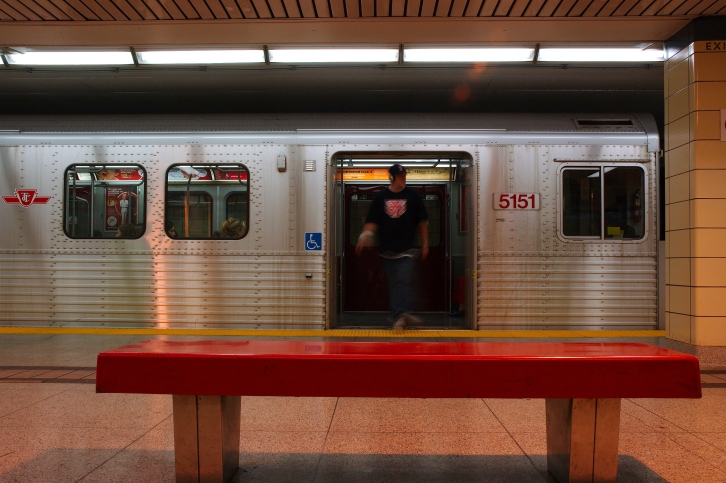TORONTO – It will be at least 12 months before Metrolinx makes a recommendation on whether to build a Yonge relief subway line.

Metrolinx staff released their timeline for several projects – including the relief line – Friday that will attempt to ease gridlock across the GTHA. But it will be at least year before a recommendation on preferred options is made.
- In the Spring, Metrolinx will “develop and test scenarios”
- Sometime in the Summer, Metrolinx will study a short list of options
- In the Fall, Metrolinx will hold public consultations for the short list
- In early 2015, Metrolinx will reveal their preferred scenario
- In Spring 2015, Toronto city council and the TTC board will have their say
Some members of the Metrolinx board were concerned during Friday’s meeting that the agency was moving too slowly from studies to construction. But board chair Robert Prichard said extensive public consultation is necessary.
“Do I think the study should move faster than it’s moving? Probably not,” he said. “We need a result where the consultation has been rich, the stakeholder buy in is rich, the different parties come together so there is a true consensus, as opposed to a imposed solution, so taking the extra six months or so to make sure it’s a true consensus that will hold I think is actually the right way to proceed.”
But Councillor Josh Matlow – an outspoken advocate for the relief line – said public consultations and further study are not necessary to know that the relief line is needed.
“Evidence supports building the relief as our top priority and the timeline for beginning that project should begin immediately,” he said in an interview Friday. “The relief line needs to be there to accommodate our growing population and any new ridership.”
The TTC has recorded record ridership in the last few years and that’s expected to continue. The TTC had 514 million riders in 2012 and projections suggest that will grow to 543 million in 2014 and 555 million in 2015.
The TTC is instituting a number of changes to increase capacity including new trains and signalling systems.
But the system is already at capacity.
“On our current subway system, we’re already seeing overcrowding. It’s difficult for many residents to get on the first, second or even third train during rush hours and once they get on the train, they’re on like a sardine,” Matlow said. “While we are debating how and where we’re going to be expanding the system, it is vital that we begin with improving capacity on the existing line.”
By 2031, even with new trains and signalling systems, TTC CEO Andy Byford said the system will be “overwhelmed” without the relief line.
He spoke with an interested Prime Minister Stephen Harper at Downsview Station on Thursday about the need for the relief line.
Harper announced Thursday $14 billion for infrastructure funding across Canada. Byford is hoping Toronto gets a significant portion of that.
But the relief line won’t immediately fix congestion around the GTHA and Metrolinx is studying several other projects and changes that can be utilized to ease congestion.
“We have to look at the GO networks, we need to look at the fare policy and how we can make it easier for customers to use the entire system and not just one part of the system,” Metrolinx CEO Bruce McCuaig said. “We need to look at how we can make the existing system more efficient for our customers and of course a relief line is one element of that.”
Among the various projects Metrolinx will study is rapid transit along Don Mills, converting the waterfront streetcar to an LRT, the relief line, using GO corridors for frequent rapid transit, adding express service on the Yonge subway, building an LRT through the Don Valley on existing railways and building new GO railways.
But it could be a difficult task politically to pay for the relief line or any of Metrolinx’s proposed projects. Ontario’s Liberal government under Kathleen Wynne is looking at revenue tools, including a hike to the provincial gas tax, to pay for the transit but a shaky minority government could put that policy at risk as both opposition parties have already vocally opposed a hike in taxes.
– With files from Mark McAllister


Comments